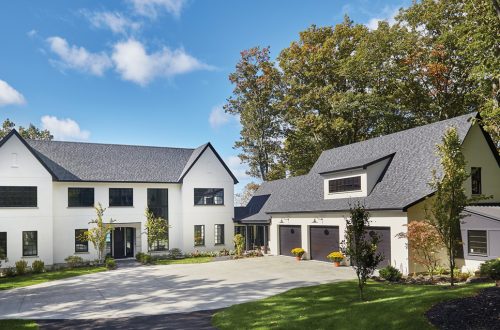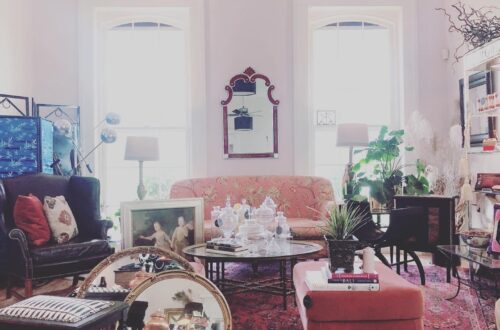For David Weeks, designer and founder of David Weeks Studio in Brooklyn, New York, there is a richness and a kinetic quality to light. In the built environment, it serves as a visual language, a source of comfort and well-being, and as an added layer to sculptural objects. As a natural force, it is an essential source of life in which an individual’s relationship to it is often very personal, and though he noted he entered the lighting world “sort of by default,” Weeks has become known as a pioneering figure in the region’s independent design movement with his genre-defining, instinct-forward work since founding his studio in 1996.
“I think the process of design and how you approach it seems to be one of the few remaining opportunities to have a personal take on, with everything being so digitized and program-geared, compared to having an actual physical relationship with objects. If it looks good in a rendering, then it is sort of accepted, but it doesn’t take into account the weight or balance of it. So, for me, design has been much more about the discovery process, keeping an open-endedness to it where things can feed out of other things,” Weeks said.
“Proportions, spacing, and details are the biggest challenge. It is one of the aspects that, for me, personally over the last 10-to-15 years, I’ve moved away from. Rather than rules and specific measuring devices, I’ve instead trusted my instincts to create this scale of an object based on just how it looks in front of you and applied measurements at the very end. I definitely believe in the instinctual aspect of the process in creation. The set of given rules of measurements that exist are all boundless in my mind and are allowed to be able to change and fluctuate within the act of creation,” Weeks added.

David Weeks Studio is an internationally renowned design atelier known for large-scale, sculptural lighting and kinetic objects. Over the last nearly three decades, the studio and its team have been dedicated to the act of making, developing a portfolio of work that inherently builds on itself and offers unexpected pathways into the craft. It has resulted in a body of work recognized for its gravity-defying pieces, minimalist visual language, and exploration of scale, proportion, balance, and movement. Led by Weeks, who studied sculpture and painting at the Rhode Island School of Design—and has a background in sculpture, jewelry, and furniture—the studio has since developed custom, limited edition lighting pieces as well as collaborated with like-minded brands to craft different lighting, furniture, home goods, and textiles.
“I grew up wanting to be an artist. The act of making was always a part of my childhood and I think that was just the inherent default or expectation that I was shooting for. My parents were super supportive and I grew up in Athens, Georgia, which was sort of a creative town at the time. It has this whole energy to it that was exciting,” Weeks said.
“Design has this great democratic aspect to it where you can make thousands or you can make three. I look for the personal aspect of it, you know, the thing that you bring to it, how you see things, and not try to make it look like someone else’s or whatever you are discovering. You are listening to yourself and what your personal aspirations are for the object. That is one of the greatest parts about design and art; they are so closely similar in process, but they are so different in output or in finale. A beautiful painting is completely different than a standing light, but you can definitely approach both things with the same amount of discovery and open-eyed interest,” Weeks added.
Recently, David Weeks Studio unveiled its latest artist-edition item, known as SCOPO, during NYCxDESIGN week in May 2024, following David’s fellowship at the American Academy in Rome. The large-scale, pendulum-like sculptural fixture features a combination of 14 individual light sources, interlocking hooks, brass-sheeted pendants, and a custom plum bob with a built-in lever filled with 35-year-old whiskey. Extending 13 feet, the lighting fixture suspends from a single point and pivots in continuous movement, revealing its spine-like curvature. For Weeks, who noted the work was a product of his instinctual approach to creation, Rome was an amazing experience in which he had six months to clear his head in a beautiful studio that had nothing in it other than tables, chairs, and two boxes he brought from his Brooklyn-based studio.
“It was a great opportunity for me to explore ideas from the past and new ones going forward. I had two boxes of little objects, prototypes of different concepts, and a handful of useful items like flashlights, steel rods, springs, wood dowels, and counterweights. It was very much an exploration of finding what works, and if you know anything about lighting and power, it is that you always have to have your source,” Weeks said.
“Without a full-blown J-Block in the ceiling in the room, I needed to solve that problem and create self-sufficient lighting elements. In the end, that became flashlights, which I ended up buying 15 of at a local flea market. SCOPO is the Italian word for ‘scope,’ creating the lens that the light is projected through, and the flashlights had this really great quality since the light is so directional. You get a really hard line of where the light is coming from and where it is going, very much like a spotlight,” Weeks added.



Weeks also noted having become very comfortable finding balance in sculptural elements in his work, the prototype came together rather quickly. Once the balance was set, it intuitively resulted in a spiral or the spine-like curvature that descends from the ceiling, with each “vertebrae” branching off with a paper cone that acted as a source of directional light.
“It created this disco-ball-like experience. It had these very white spots around the wall as they would travel, because the whole thing would spin free of any sort of connected power source. It had its own mobility, so it had this great way of affecting the whole room at one time. You could wind it up and then let it unwind fast, so there was an unexpected action to it. It also affected the space from ceiling to floor because of the counterweight at the base of it, so the action, the whole resilience of the vertebrae, is activated from this weight,” Weeks said.
“In the end, it was just very natural. It was very clear what the intention was, so it came together easily. It is just a great example of my process and the history and the knowledge I’ve acquired of lighting and what it takes to create something unexpected, but also function, and be able to express itself,” Weeks added.
The studio also showcased its Whiplash Table Lamp, featuring a hand-blown shade and brass arm “inspired by the sinuous lines of the art nouveau era,” during NYCxDESIGN, according to the press release, and is currently in the process of relocating its studio. For Weeks, who noted it has provided a great opportunity—and a bit of catharsis—to explore old prototypes, drawings, and models, the move also represents a next chapter and new phase for the studio. Looking forward, the studio is aiming to expand its on-demand product line for end users, clients, and partners—and views it as a chance to really activate the process for creating and exploring how it approaches its work.
“We are kind of going back to the beginning in a way…I entered the lighting world by default. Light was this bonus feature that, granted, that was what you were making, but I think I was initially much more interested in making objects creatively. It is one thing as a designer to design a chair or a glass, but it’s rare when an object has a whole secondary level of function to it. With light, it’s not only the output of what you are making, but also very much how the sun or time of day dictates how your product is accepted and how it is used,” Weeks said.
“It’s just incredible how much power the natural forces of the world have over your expectations. And I’ve always been fascinated with the moment when you’re sitting in a chair in the afternoon reading a book and the sun is going down. There is that instance where you have to decide to turn on a light, and I’ve noticed it’s very personal: a lot of people turn on the light from the start because they don’t want that moment to happen, and then other people can appreciate that slow evolution and darkness. I think the relationship between humans and light is huge and also very much taken for granted,” Weeks added.



Text: R.J. Weick
Photography: Courtesy of David Weeks Studio
First published in Great Lakes By Design: Bold Graphics, Volume 8, Issue 4






